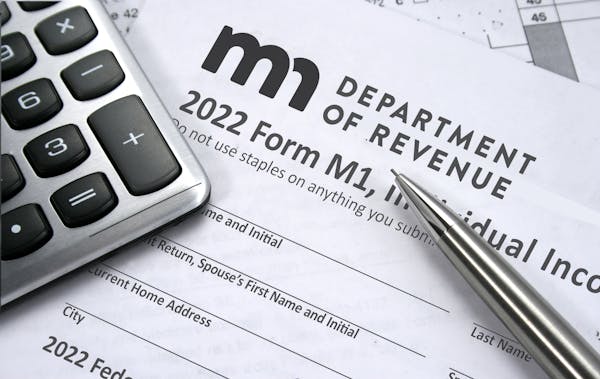Gov. Tim Walz used the impending tax filing deadline to remind Minnesotans on Wednesday about the state's new child tax credit, which could mean thousands of dollars in refunds for some lower-income families.
The $1,750 credit is the highest child tax credit in the country. It applies to all children 17 years old and younger for eligible families, with no cap on the number of children.
Democrats included the credit in a $3 billion tax package passed last session, inspired by pandemic-era direct payments from the federal government that helped slash poverty rates across the country. DFL leaders say the credit could cut childhood poverty in Minnesota by a third.
"We knew that one of the challenges we would have is to get the word out to people, to let them know this is out there," Walz said at a Capitol news conference. "Our goal remains 100% [filing]."
Monday is the deadline to file taxes, but there are extensions available for some residents if they miss that date. Here's what you need to know about who's eligible for Minnesota's new child tax credit and how to receive it.
Who qualifies for the credit?
The credit phases out for Minnesota families whose income is more than $29,500 for single filers, or $35,000 for married joint filers. The credits are reduced as incomes rise, tapering out at about $95,000 in income for joint filers with four kids. The credit will increase with inflation each year.
You're not eligible for the credit if you are a nonresident for Minnesota tax purposes, are another person's dependent or have a restriction on claiming the federal Earned Income Tax Credit, according to the Department of Revenue. The department has a form taxpayers can fill out to determine if they're eligible at www.revenue.state.mn.us/child-tax-credit.
How do you get the credit?
To receive the tax credit, families must file a 2023 income tax return, even if they're not legally required to file taxes. That includes taxpayers who made up to $13,825 in income in 2023, or under $27,650 for married joint filers.
Will I get the money as part of my tax refund?
The child tax credit is a refundable credit, so it can lower the amount of taxes owed, increase a taxpayer's refund or both. If a taxpayer owes nothing, the full child tax credit will be applied to their refund. The money should be directly deposited or sent in the mail within a few weeks of filing your tax return.
How many people have gotten the credit so far?
Since the start of the year, the state estimates more than 356,000 children have already benefited, with families receiving an average credit of $2,510. Walz said the state has returned roughly half a billion dollars to taxpayers already through the program, but the goal is to hit 100% of eligible filers claiming the credit.
What if I miss the deadline to file my taxes?
For taxpayers who are only expecting a refund this year, there is an extension that is automatically granted until Oct. 15, said Sarah Bronson, an assistant commissioner at the Department of Revenue.
Are the payments issued in one lump sum?
Yes, taxpayers should expect the full amount in their tax refund. However, this session, Walz is pitching a new child tax credit pilot program that would break the credit up into two payments throughout the year, rather than all at once after taxes are filed.
Star Tribune staff writers Kelly Smith and Tom Nehil contributed to this story.

How the Star Tribune is covering the 2024 election

Fact check: Walz and Vance made questionable claims during only VP debate

In Tim Walz's home city, opposing groups watch him debate on the national stage

